
PART FIVE:
Christmas Lighting MATH
It’s that time of year again – time for hanging those crazy little mini incandescents, C-6’s, and LED strands that you’ve added in (because they’re the “newest, brightest colors” [!!!]), and you’re digging out the cube taps and power strips. You’re looking through drawers and cabinets for the little bags of spare lamps, fuses, and blinker lamps that you’ve stashed all year, or from last year. Yeah, we know the drill.
Have you ever noticed that many of the packages of Christmas lights that you buy say things like “do not plug more than X strands together at once,” where X is a number like 3 or 5, depending on several factors like lamp size and wire length? Well, surprise, there is a good, solid reason for that! Generally, that bit of instructions and the numbers associated with them has something to do with preventing you from burning your house down and killing you and your whole family while you sleep. I mean, generally. But who really reads those directions, right?
If you are smart and you like your family and house and nice stuff, I would advise following those directions. First, let me show you, for example, how fast a Christmas tree turns a house into carbon rubble when it catches on fire from, for example, an electric short:
Pretty crazy, huh? That’s why we follow directions. The days of a stack of Edison plugs stuck together in an outlet that’s way overloaded need to be gone. Be smart, and you’ll not have to worry about these kinds of scenarios.
Unfortunately I have to put the disclaimer in here that the information below is to be used at your own risk – JimOnLight.com will not be held responsible if you cause damage or death. If you’re not a qualified electrician and have questions about something that a qualified electrician should be doing, don’t do it.
When trying to figure out how many strands of christmas lights to stick end to end together, it’s best to just follow the directions on the package. Remember just a minute ago when I said “Generally, that bit of instructions and the numbers associated with them has something to do with preventing you from burning your house down and killing you and your whole family while you sleep” ? This is the part of the story where that actually shows you that it’s easier to follow the directions than it is to burn your whole house down. However, let’s just say you have limited information, or small combinations of variables like individual lamp voltage, individual lamp amperage, total strand wattage, or for some reason, wire gauge of the strand. You can manipulate the good old Power Formula to give you the answers using some constants that you can kind of take for granted. You know the power formula, right? The “West Virginia Formula?”
Here are some things you can pretty much use at your own risk as constant numbers to help with the figurin’ of the math, when it comes up:
- In the USA, which is where I live, the voltage at the wall outlet is gonna be somewhere between 110-120 volts. For a constant standard number, you can use 120 volts as the line voltage at the wall when you’re calculating, it’s the upper limit.
- Typically in your home, the wall outlets and circuits therein are going to be rated at either 15 amps or 20 amps. The best way to figure out which each one is would be to go find that outlet in the breaker box and verify the circuit’s amperage rating on the breaker itself. I just went and checked the breaker box here in my apartment, and all of the circuits in my place are 15 amp circuits. I’m guessing that a lot of your homes are going to be on 15 amp breakers.
- A large majority of christmas light strands are wired with 22 gauge (awg) wiring, which has a total ampacity rating of about 5 amps. A strand of 150 incandescent mini lamps at 36 watts total is only pulling 0.3 amps.
- If you can verify that all wiring from the load to the breaker is the proper gauge for maximum wattage use for a 20 amp circuit, that circuit will provide a maximum of 2400 watts. The same circuit on a 15 amp breaker will give a maximum wattage of 1800 watts. Please note – this is if all conditions, like all sections of wiring and multi-gang units, like power strips and cube taps.
- For a reason that I have yet to figure out, light strands are calculated on this odd “minus two per fifty lamps” constant. What I mean by that is the calculations on the entire strand of lights seem to be calculated by taking away 2 lamps per every 50. For example, if you calculate all of the variables of your typical string of 150, you get numbers that are for 50 lamps, but the actual ratings are for 144 lamps, which is 6 less than 150, or 2 per every 50 lamps. Weird, huh?
Let’s put some of this information to the test and figure out a challenge. I just found a 150-lamp string of mini-incandescents. I want to know how many amps this string will pull as a whole. There are some things we know, but we don’t know amps. Let’s manipulate that good ol’ Power Formula:
Easy, yeah?
Okay, here’s another one:
How many strands can I plug end to end, knowing that A) the wire on the strand of lights is probably 22 gauge, B) each strand of 150 draws about 0.3 amps, C) the 22 gauge wire in the strand is rated for about 5 amps, and D) there is a 3 amp fuse in line on each strand of 150 lights. I plan to plug the business end of these into the wall, rated at 15 amps.
Well, I checked the package, and the package said not to plug more than five strands together, for a total of no more than 210 watts.
Technically, if I multiply the 36 watt strands together in total, so five total strands, that equals 180 watts. A 6th strand added would give me 216 watts. 216 watts, which draws 1.8 amps, is well under the 3 amp fuse rating. So what’s the right answer?
The right answer is what the package said, in this case. The package said no more than five strands end to end. Sure, you could plug together that extra strand, because even with adding that sixth strand, the total amperage is only 1.8 amps, which is still 1.2 amps under the 3 amp fuse rating. However, when something goes wrong and you burn down your house, your neighbor’s house, and your other neighbor’s house, what is going to happen when you get sued is that the fire inspector is going to somehow find that sixth strand plugged in, and the box told you that you were only supposed to plug five strands together.
See how this works? This is purely legal. When you go outside of the package’s advisory, you thereby null and void any warranty, even though technically the product could handle it. It’s a slippery slope. You have to be careful.
Okay, here’s another one:
Let’s say I have a 12 gauge heavy duty extension cable to which I will plug a 15 amp power strip with a circuit breaker. How many strands of christmas lights can I plug into that power strip and still be okay, technically speaking?
We know a few things here – the 12 gauge heavy duty cable is rated at 20 amps. However, our power strip is only rated for 15 amps, so that brings our total load down to 15 amps. The weakest rating in the group is where to place your limit. So if you were to be completely ridiculous and stupid and plug another extension cable between that power strip and the heavy duty extension cable that was, say, a 16 gauge cable (rated at 13 amps), then the system is knocked down to 13 amps. Epic fail can happen really quickly here, so pay attention to what you’re doing.
Since we can’t plug more than five strands end to end, we can use the power strip to plug in several sets of five as groups of five. Make sense? My power strip is rated for 15 amps, so I need to figure out if I can plug a strand of five strands into each of the six female outlets on the power strip. Math time!
Let’s go a step further – how many of these power strips with six strings of five strands of christmas lights can we plug into the wall in one 2-gang outlet?
This really depends on the load rating on the specific circuit you’re plugging your christmas lights into, as well as how many other branch circuits are connected to that specific circuit breaker. What I mean is that sometimes several outlets in your home or garage can be running to one circuit breaker. That sucks, sure, but it happens, and it happens a lot. My condo, for example, has a total of 12 2-gang Edison outlets on the walls, and a total of five circuit breakers controlling them all. One of the circuit breakers in my condo has four branch circuits – on a 15 amp circuit breaker. That means that over four 2-gang outlets in my apartment I can only plug a total of 15 amps’ worth of devices. That kinda sucks.
You need to be able to know the rating of your circuit breaker in order to be able to answer the question above. Go open your circuit breaker panel or fuse box and check what the rating is on the circuit you plan to use. Check out these images below – a 15 amp and 20 amp breaker, and a 15 amp and 20 amp screw-type fuse:
Breakers – notice the rating number painted on the actual switch itself:
Fuses – again, notice the rating number (15 and 20, for 15 amp and 20 amp):
Remember from above, a 15 amp breaker or fuse is only rated for 1800 watts, and a 20 amp breaker or fuse is rated for 2400 watts. So could I plug in two of my power strip rigs into a 15 amp breaker or fuse?
The answer is no, no you cannot. Each of the power strips has six strands of five strings of lights end to end, for a total wattage of 1080 watts, drawing 9 amps. Two of them into one circuit that had nothing else plugged into it totals 2160 watts at 18 amps, which is definitely too much for a 15 amp circuit breaker or fuse. However, if the circuit was a 20 amp rated circuit, 2160 watts at 18 amps (or two of the power strips with six strands of five strings of lights at 9 amps each) would be close to the limit, but acceptable. The biggest thing that people forget to check is the existing loads on a branched circuit – like a fridge, appliance, radio, or what-have-you, that pushes the circuit to the point of tripping the protection (breaker or fuse).
I need to tell you all – if you have aluminum wiring in your house, none of this stuff applies to you, as aluminum wiring is dangerous and scary. Call an electrician to have that replaced.
Generally, some good rules and practices to abide by when doing electricity math with christmas lights:
- if there are instructions on the packaging relating to how many strands you can plug in end to end, follow it.
- if you plug something in and it trips a breaker or blows a fuse, something is wrong – fix it before proceeding.
- never overload a circuit, ever.
- if you don’t know the answer, get in touch with a qualified professional who can help you figure the answer.
Be safe out there, folks! Safety first, they’re just christmas lights after all!
Thanks, Elcosh Images, Aubuchon Hardware, Fuel Fix, Home Depot, and Power Stream!

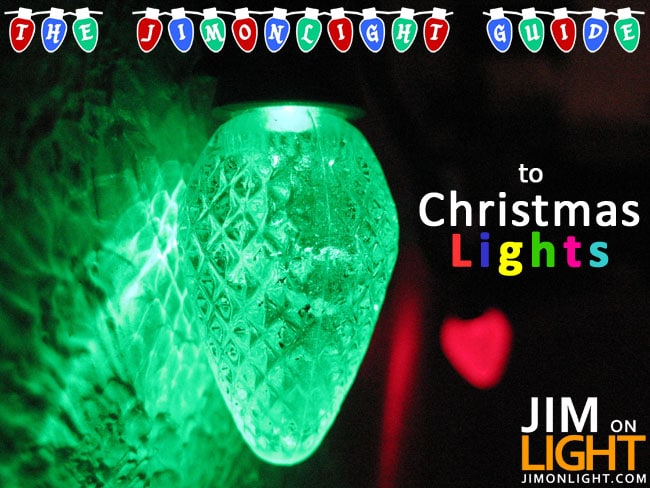
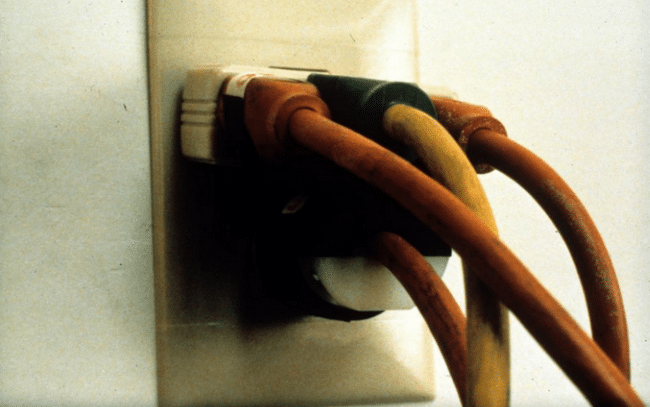

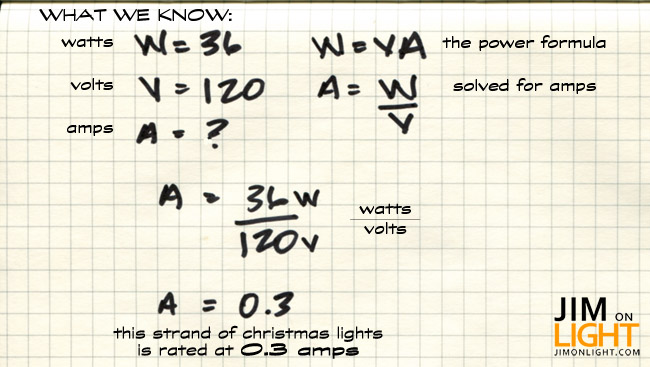
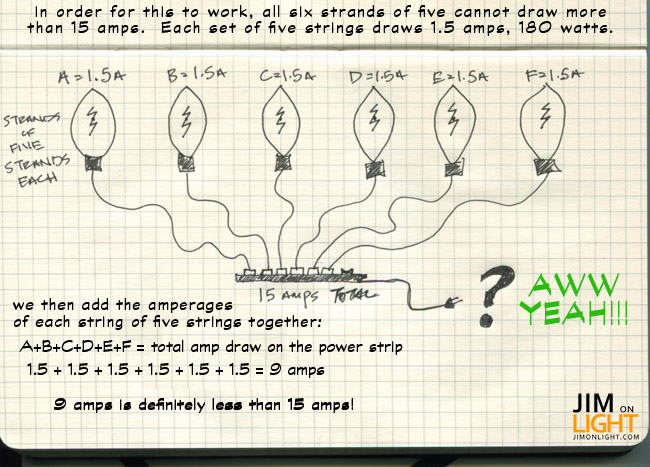
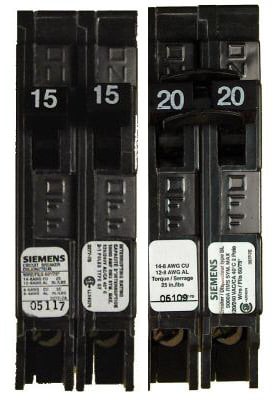
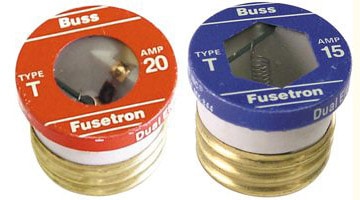
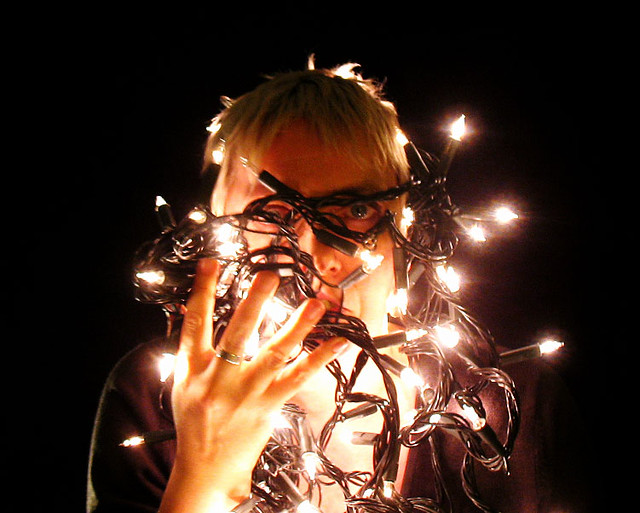




Jim,
Good info here, but one more piece of the puzzle to add.
Household breakers are usually thermal-magnetic, rather than fully magnetic, like the breakers on good theatrical dimmers. Generally speaking, a 20A household breaker is only rated for 17A of constant load. If you’re using a toaster or a microwave, the load isn’t there for long & the breaker can handle it. But, if you’re putting lights on it that will be on for a long period of time (measured in hours, not single digit minutes), you can still trip the breaker at greater than 17A, because heat will build up in the circuit breaker. So, in this application, you’ll need to derate your circuit breakers by 15%. 2040W on your 20A 120V system, or 1530W on your 15A 120V system.
Now, I’m not an electrical engineer or a licensed electrician, so, like you, I make no warranty about the validity of this information, but I’d err on the side of caution, if I were one of your readers.
Break out the hot dogs!
Thank you for this info. I am putting up lots of Christmas lights this year and tripped a breaker. I got nervous and rightfully so after reading this. I unplugged all of them and will he re evaluating my situation tomorrow! Thanks again.
Comments are closed.